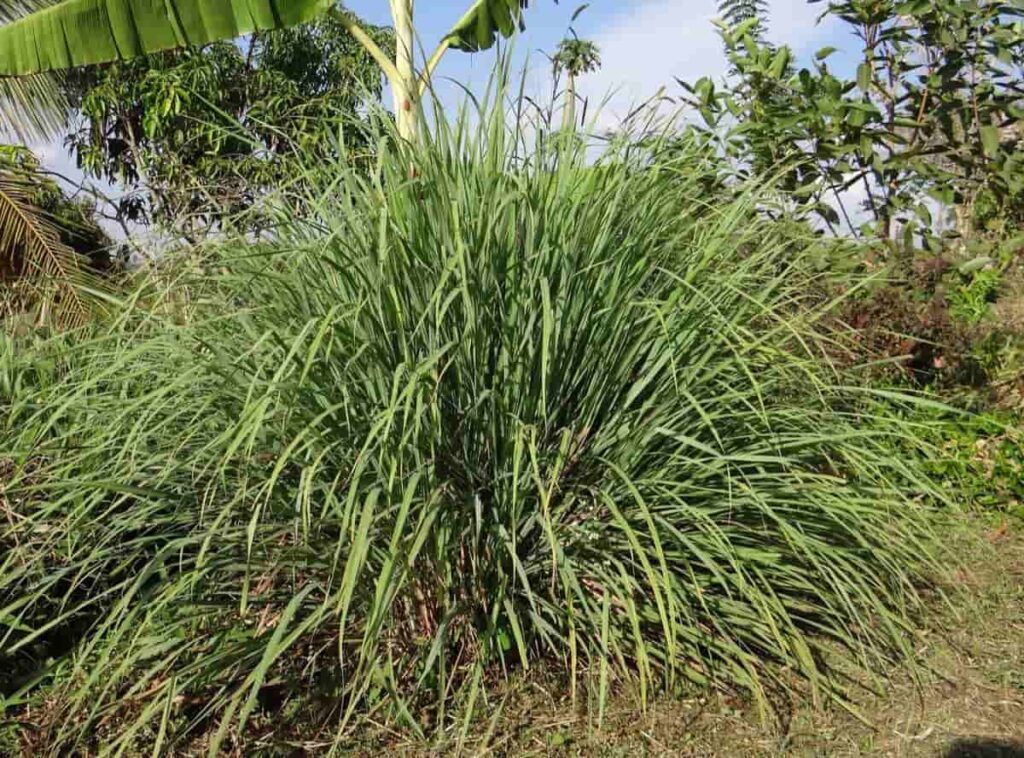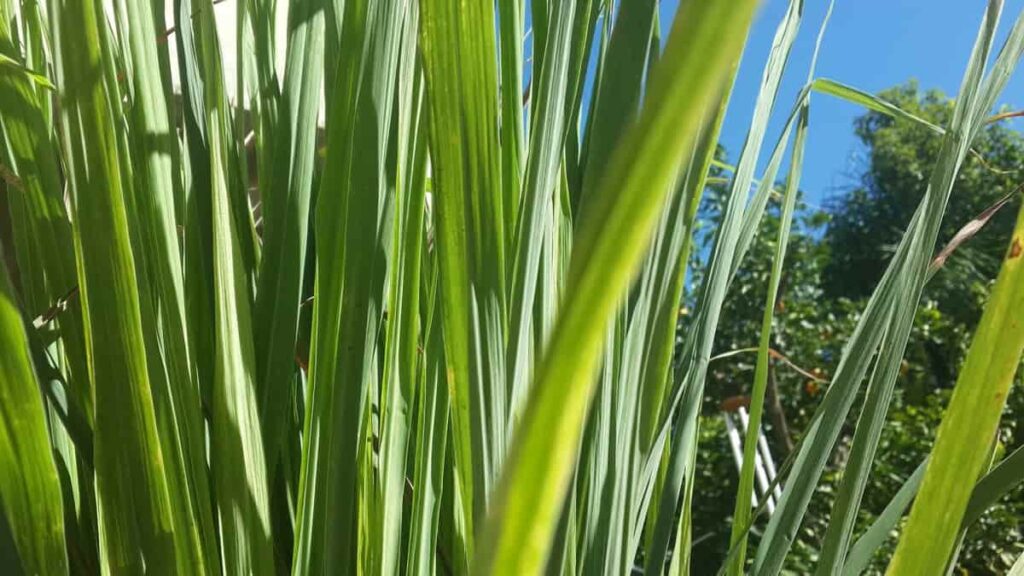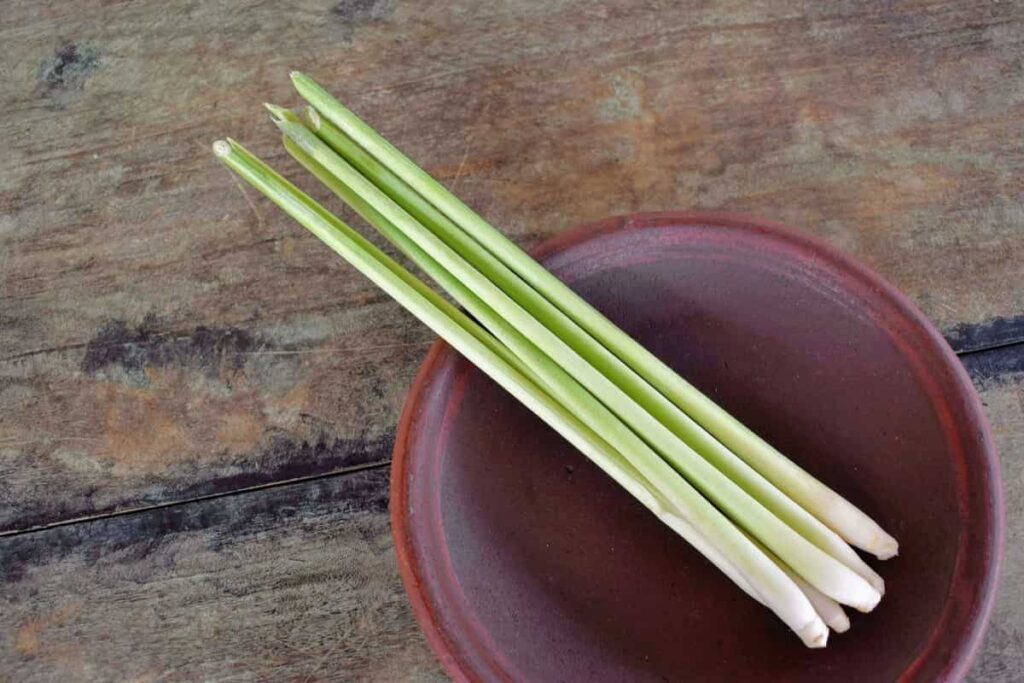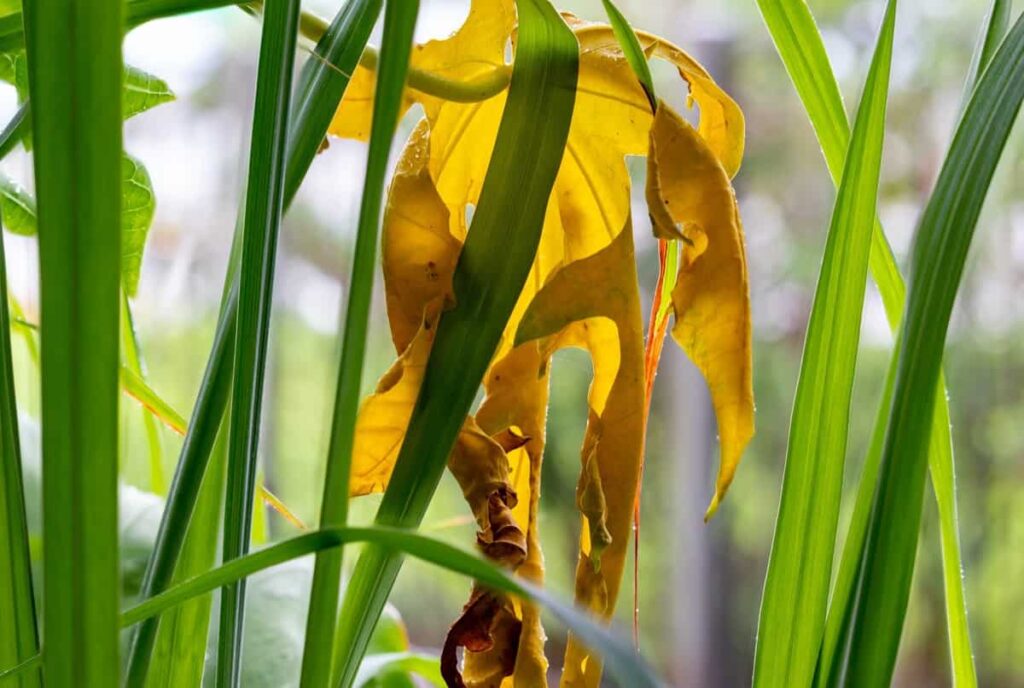Lemongrass is a key ingredient in many Asian dishes and is used in various beauty products. Lemongrass is a perennial grass that grows to about 3 to 6 feet tall. The leaves are long and slender with a pointed tip. The flowers are small and yellowish-white. The plant has a strong citrusy smell and taste. You can grow your Lemongrass from seed with patience and basic gardening knowledge. By growing your Lemongrass, you’ll have a never-ending supply of this versatile plant.

There are a few reasons you should grow Lemongrass from seed rather than buying plants or starter kits from a nursery. First, it is much cheaper to grow your plants from seed. Secondly, seeing your plants grow from seedlings to full-grown plants is more rewarding. And finally, growing your plants allows you to choose the varieties that you like best. Once established, it will thrive in most climates and requires little maintenance.
How to grow Lemongrass from seed
How long does it take for Lemongrass to grow from seeds?
- The best time to plant Lemongrass is in spring or summer when the temperatures are warm. Lemongrass prefers full sun and well-drained soil. You should soak the Lemongrass seeds in warm water for 24 hours. This will help them germinate faster. Plant the Lemongrass seeds in a moist potting mix, pressing them lightly into the soil. Lemongrass seeds take 2 to 3 weeks to germinate.
- Once the seedlings have sprouted and are several inches tall, you can transplant them into your garden or larger pots. Lemongrass can also be propagated by taking cuttings from an existing plant. You can harvest Lemongrass in two to three months after sowing seeds.
In case you missed it: Growing Lemongrass Hydroponically – A Full Guide

Is Lemongrass easy to grow from seeds?
- Lemongrass is relatively easy to grow from seeds. The biggest challenge is getting the seeds to germinate, but the plants are relatively low maintenance once they do. Lemongrass prefers warm, humid conditions and lots of sunlight. You should plant it in a spot that meets those requirements.
- Water regularly and fertilize every few weeks during the growing season. When the weather starts to cool off in fall, cut back on watering to prevent the roots from rotting. In early spring, start watering again and fertilizing every few weeks to encourage new growth. You can harvest Lemongrass anytime during the growing season by cutting stalks down near the base of the plant.
Pruning for Lemongrass
Pruning Lemongrass is simple: cut off any brown or yellow leaves. Then, cut back any long, leggy stems to encourage new growth. Finally, trim away any dead or damaged leaves or stems. You can encourage new growth with a few quick snips and prevent your Lemongrass from getting top-heavy. Pruning is a great opportunity to take some fresh Lemongrass cuttings to propagate new plants.
Growing Lemongrass from cuttings
Cuttings should be taken from healthy plants that have not flowered. Each cutting should be about 6 inches long and have at least two nodes. Place the cuttings in a moist sand or vermiculite pot and cover them with plastic wrap. Keep the potting mix moist and place the pot in a warm location. The cuttings should root within 2 to 3 weeks. Once Lemongrass cuttings have rooted, you can transplant them into pots filled with well-drained soil.
In case you missed it: Growing Lemongrass from Seed, Cuttings in Pot, Indoors

Growing Lemongrass in pots
- You can grow Lemongrass in pots. Growing Lemongrass from seed at home is easy and only takes a few steps. You should choose a 12 inches wide pot for growing Lemongrass. First, fill a pot with well-drained soil and place the seeds on the surface. Cover the Lemongrass seeds with soil and water well. You should keep the pot in a warm, sunny location. Keep the soil moist; you may see new growth within a few weeks.
- If you start your seeds indoors, harden them off before transplanting them into their outdoor pots. Once your Lemongrass plants are established, they will need very little care. Every few weeks, water them regularly and fertilize them during the growing season. When the weather cools down in fall, cut back on watering and fertilizing. Your Lemongrass plants will go dormant and need very little care during this time. In spring, start watering and fertilizing again to encourage new growth.
Sun requirement for growing Lemongrass
Lemongrass does best in full sun but tolerate partial shade. It is a fast-growing plant, so it will need plenty of space to spread out. If you are growing Lemongrass from seed, you can start Lemongrass seeds indoors before the last frost date in your area. You can transplant the Lemongrass seedlings outdoors after the danger of frost has passed. Lemongrass can also be grown in containers.
Can I plant store-bought Lemongrass?
You can plant store-bought Lemongrass. The best time to plant Lemongrass is in the spring. Plant the Lemongrass in a pot at least 12 inches wide with drainage holes. Fill the pot with potting mix and place the Lemongrass root ball in the center of the pot and cover it with soil. Mist the soil and place the pot in a sunny spot outdoors. Lemongrass prefers soil that is on the acidic side, so if your soil is neutral or alkaline, you may need to amend it with some sulfur before planting.
Germination of Lemongrass seeds indoors
- If you’re growing Lemongrass from seed, you’ll need to start them indoors about 8 to 10 weeks before your last frost date. Lemongrass is tropical, so it needs warm weather to thrive. You can grow Lemongrass indoors, but it does require some effort. Lemongrass is a tropical plant that needs warm temperatures and sunlight to thrive. If you can provide those conditions, you can grow Lemongrass indoors successfully.
- To plant Lemongrass seeds, fill a small pot or tray with moistened potting mix and sprinkle the seeds on top. Keeping the soil moist and warm at around 21°C is ideal, and the seeds should germinate in 10 to14 days.
- When they’re big enough, transplant them into larger pots or garden beds. You should give plenty of room to grow. Each plant will eventually spread to about 2 to 3 feet in diameter. Lemongrass prefers full sun but can tolerate light shade. It’s not particular about soil type, but it does need good drainage. Water regularly during dry spells; Lemongrass is fairly drought tolerant once established, but young plants need consistent moisture to get started.
In case you missed it: How to Grow Parsley from Seed: A Detailed Guide to Planting to Harvest

Best soil for growing Lemongrass
When growing Lemongrass from seed, it is important to use soil rich in nutrients. A good option for Lemongrass is a potting mix made specifically for herbs. This soil will give the plant the necessary nutrients to grow and thrive. It is also important to ensure the soil is well-draining, as Lemongrass does not like to sit in wet conditions. Lemongrass needs well-drained soil with a pH between 5 to 8.
Water requirement for growing Lemongrass
- Lemongrass is a tropical plant that loves hot weather and lots of water. In its natural habitat, Lemongrass grows in wet, swampy areas. Keeping the soil moist is important for growing Lemongrass in your home.
- Water your Lemongrass plants daily or as often as necessary to keep the soil moist. Lemongrass is a very thirsty plant, so don’t be afraid to give it lots of water. To keep the soil moist, you may need to water your Lemongrass twice a day during the hottest months.
- You may need to mist your Lemongrass plants daily to prevent them from drying out if you live in a dry climate. Lemongrass can tolerate brief periods of drought, but it will not thrive if the soil dries out completely.
Why is my Lemongrass turning purple?
Purple leaves on Lemongrass are usually caused by a lack of nitrogen in the soil. Lemongrass is a heavy feeder and requires regular fertilization to prevent nutrient deficiencies. A simple way to provide nitrogen to the soil is to side-dress with compost or manure every few months.
Growing Lemongrass from the stalk in water
- Simply take a healthy Lemongrass stalk and cut off the bottom inch or so. Place the stalk in a glass or jar of water and make sure that the water covers at least half of the stalk. Put the glass or jar in a sunny spot and wait for the roots to grow.
- Depending on the temperature and how often you can change the water, the roots form within a couple of weeks. Once an inch or two long, you can transplant your new Lemongrass plant into potting soil and enjoy fresh Lemongrass all year.
How deep should Lemongrass be planted?
- Lemongrass is a tropical grass that can reach up to 4 feet in height. When growing Lemongrass from seed, it is important to plant the seeds at the correct depth. Once the seedlings emerge, thin them, so they are spaced about 10 inches apart.
- Lemongrass seeds should be planted about 1/4 inch deep in well-drained soil. They germinate best if the soil temperature is between 21°C to 25°C; after planting, water the seeds well and keep them moist until they germinate.
In case you missed it: How to Grow Borage from Seed: A Detailed Guide to Planting to Harvesting

Best month to harvest Lemongrass
Lemongrass is a tropical plant that is typically harvested between the months of May and October. The best time to harvest Lemongrass is when the stalks are at least 1 foot tall, and the leaves start to turn yellow.
Lemongrass care in winter
- You should cut Lemongrass back for winter. Doing so will help the plant to survive the cold weather and produce new growth in the spring. When cutting back Lemongrass, leave about 2 inches of stem above the ground.
- To keep Lemongrass alive in the winter, water your Lemongrass regularly and fertilize it throughout the growing season. Mulch your Lemongrass heavily in the fall to insulate the roots. Finally, bring your potted plants indoors or cover them with a frost blanket when the temperature drops.
- Lemongrass is a tropical plant that will not survive if the temperature drops below freezing. However, you can try growing Lemongrass in a pot and bringing it indoors when the weather gets cold. Lemongrass is a tough plant and can tolerate some neglect, but it will need extra care during the winter. You may also need to provide supplemental light if your Lemongrass lacks sunlight.
How deep do Lemongrass roots go?
Lemongrass roots can go quite deep, depending on the soil type and climate. In general, Lemongrass roots will go down about 2 to 3 feet. Your Lemongrass roots may go farther if your area has little rainfall or very sandy soil.
Best time to plant Lemongrass
Lemongrass seeds should be started in late spring or early summer. The best time to plant Lemongrass seed is about two months before the last frost date in your area. Lemongrass grows best in frost-free climates, so you should start your seeds indoors. If you start your seeds indoors, harden them off before transplanting them outdoors.
What grows well with Lemongrass?
You can plant some plants with Lemongrass to create a fragrant, flavorful, and beautiful garden. Lemongrass grows with other herbs like Basil, Cilantro, Mint, and Oregano. It also pairs well with vegetables like Eggplant, Peppers, Tomatoes, and Summer Squash. When planting Lemongrass with other plants, give it plenty of room to spread out since it can get quite large.
Harvesting of Lemongrass
To harvest Lemongrass, cut the stalks about an inch above the ground with a sharp knife or gardening shears. Lemongrass can be used fresh or dried. To dry, tie the Lemongrass stalks together and hang them upside down for about two weeks. Once dry, store the Lemongrass in an airtight container out of direct sunlight.
In case you missed it: How to Grow Rosemary from Seed to Harvest: Check How this Guide Helps Beginners

Best fertilizer for growing Lemongrass
A few different types of fertilizer can be used for Lemongrass, but the best type to use is an organic fertilizer. This type of fertilizer will give the plants the necessary nutrients to grow and thrive without causing any harm to the environment. When choosing organic fertilizer, read the labels carefully and select one that is right for your plants. Apply organic fertilizer to your Lemongrass plants every four weeks during the growing season.
Conclusion
You can start your seeds if you want to add Lemongrass to your garden. Lemongrass is a fantastic herb because it can be used in many dishes and has many benefits. Growing Lemongrass from seed to harvest is not difficult but takes time and patience. By following this article, you can grow your Lemongrass successfully.
- Seasonal Flower Gardening: Best Practices for Spring, Summer, Fall, and Winter
- How to Grow Hibiscus from Flower
- Plantation Ideas for Home Decoration: A Beginners Guide
- Flower Garden Designs and Layouts for Beginners
- Planting and Spacing Techniques in Papaya: A Beginner’s Guide
- Growing Gold: Essential Techniques for Planting Pineapples
- How to Make Kalanchoe Plant Bushy: Home Remedies and Solutions
- 11 Reasons Why Your Gardenia is Not Blooming: Home Remedies and Solutions
- Eco Elegance: The Guide to Designing a Drought-Tolerant Landscape
- Gardening on a Slope: Strategies for Hillside Landscaping
- Nourish and Flourish: Top Organic Mulches for Thriving House Plants
- Everything You Want to Know about Indian Mogra Flower: Discover Uses and Growing
- Green Thumb Success: Expert Tips for Cultivating Greenhouse Pumpkins All Year Round
- Maximize Growth & Flavor: The Ultimate Guide to Companion Planting in Herb Gardens
- How to Control Rhododendron Problems Naturally: Home Remedies and Organic Ways to Fix Them
- Natural Magic: The Remarkable Benefits of Cinnamon for Plants
- Best Steps to Revive Dying Tulip with Natural and Organic Treatment
- 10 Reasons Why Your Angel Trumpet is Not Blooming: Remedies and Treatment
- How to Fix Periwinkle Leaf and Flower-Related Problems: Natural Remedies and Solutions
- How to Fix Zinnias Leaf and Flower Problems: Discover Natural and Home Remedies
- Organic Steps to Induce Lemon Tree Flowers: A Comprehensive Guide
- Bloom Booster: Crafting the Perfect Homemade Bougainvillea Fertilizer
- Optimizing Growth: A Guide to Applying NPK Fertilizer for Potted Plants
- 10 Best Homemade Fertilizers for Rubber Plant: DIY Recipes and Application Method
- How to Boost Female Pumpkin Flowers: Effective Steps for More Flowers and High Yields
- Transform Your Indoor Garden: Top Benefits of Pink Salt for Houseplants
- 10 Best Homemade Fertilizers for Peacock Plants (Calathea): Easy DIY Guide
- Unlock Blooms: 9 Reasons Why Your Potted Chrysanthemum is Not Blooming
- 8 Reasons Why Your Potted Hibiscus is Not Blooming: Fix it with Simple Solutions
- Unlock Blooms: 9 Key Reasons Your Potted Frangipani Won’t Flower
- 10 Reasons Why Is My Ice Plant Not Blooming: Remedies and Treatment
- 10 Reasons Why My Potted Hydrangea Not Blooming: Treatment and Remedies
- 10 Reasons Why is My Wisteria Not Blooming: Remedies and Treatment
- 10 Reasons Why is My Goldfish Plant Not Blooming: Remedies and Treatment
- Maximize Your Space: Ultimate Guide to Balcony Gardening with Grow Bags
- 10 Reasons Why Your Iris is Not Blooming: Remedies and Treatment